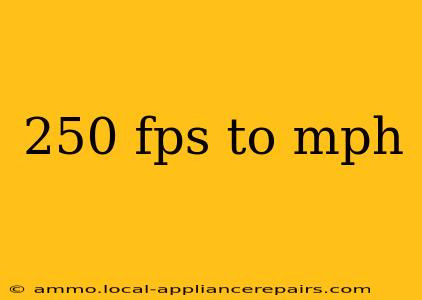This article explains how to convert frames per second (fps) to miles per hour (mph), clarifying the crucial distinction between these two fundamentally different units of measurement. It's important to understand that a direct conversion isn't possible without additional context. FPS measures frames of video or image data per second, while MPH measures distance traveled per hour. They represent distinct concepts.
The Core Difference: Frames vs. Distance
Let's break down the key difference:
-
Frames per second (fps): This unit describes the rate at which frames in a video or image sequence are displayed per second. Higher fps values indicate smoother, more fluid motion. Think of it as the refresh rate of a screen or the speed of image capture. It has nothing to do with physical speed or distance.
-
Miles per hour (mph): This unit measures the speed of an object traveling a certain distance in one hour. It’s a measure of velocity.
When Conversion Might Be Possible (Indirectly)
The only way to indirectly relate fps to mph involves linking the fps value to a physical speed. This requires additional information, specifically:
-
The distance covered in a single frame: You need to know how many miles or a fraction of a mile an object moves between each frame.
-
The frame rate: This is the given 250 fps.
To illustrate:
Imagine a camera filming a car. If the camera captures 250 frames per second, and we know that during each frame, the car moves 0.001 miles, we can then calculate the car's speed in mph.
Calculation:
- Distance per frame: 0.001 miles
- Frames per second: 250 fps
- Distance per second: 0.001 miles/frame * 250 frames/second = 0.25 miles/second
- Conversion to mph: 0.25 miles/second * 3600 seconds/hour = 900 mph
Crucially: The 900 mph result is entirely dependent on the assumed distance covered per frame (0.001 miles in this example). Different distances per frame yield vastly different mph results.
Conclusion: No Direct Conversion
There's no formula to directly convert 250 fps to mph. The conversion requires extra data about the distance traveled within the timeframe of a single frame. The two units simply measure different properties. Remember that fps describes the frequency of image capture, while mph measures the rate of distance covered over time. Always be mindful of the underlying context when attempting to relate these measurements.

